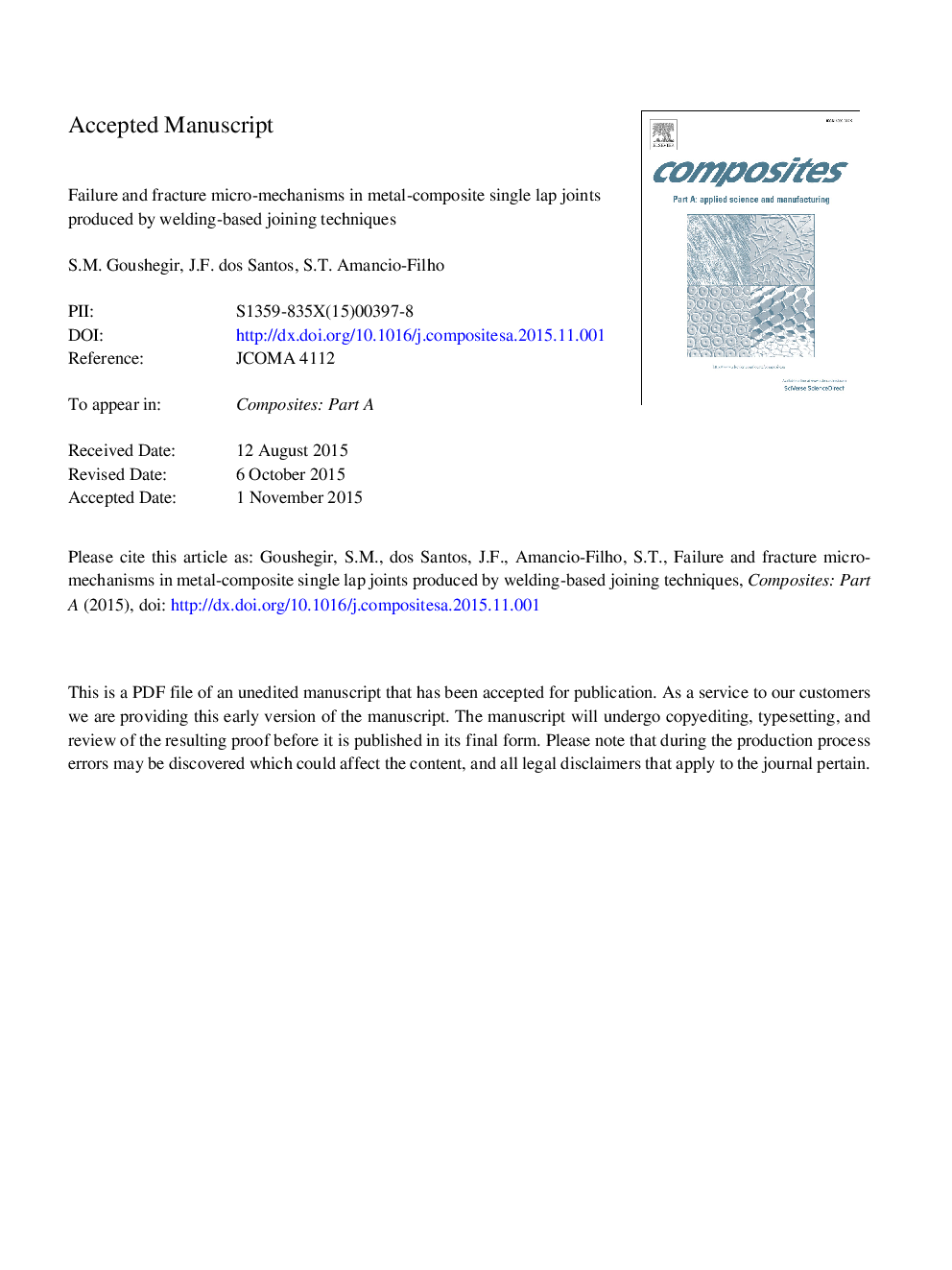| کد مقاله | کد نشریه | سال انتشار | مقاله انگلیسی | نسخه تمام متن |
|---|---|---|---|---|
| 7891282 | 1509890 | 2016 | 34 صفحه PDF | دانلود رایگان |
عنوان انگلیسی مقاله ISI
Failure and fracture micro-mechanisms in metal-composite single lap joints produced by welding-based joining techniques
ترجمه فارسی عنوان
شکستگی و شکستگی مکانیسم های میکرو در اتصالات تک لبه فلز مرکب تولید شده توسط تکنیک های پیوستگی جوشکاری
دانلود مقاله + سفارش ترجمه
دانلود مقاله ISI انگلیسی
رایگان برای ایرانیان
کلمات کلیدی
ترجمه چکیده
به تازگی برای ساخت سازه های سبک وزن فلزات کامپوزیتی، تکنولوژی پیوستن به جوشکاری ساخته شده است. در این کار، تکنولوژی اتصالات مبتنی بر جوشکاری، اتصال نقطه اصطکاک، برای مطالعه شکستگی و شکستگی میکروارگانیسم های یک کامپوزیت تک لایهای آلومینیوم انتخاب شد. تجزیه و تحلیل شکست پیشنهاد کرد که ترک های شعاعی در حاشیه منطقه اتصال ایجاد می شوند و به سرعت به شکست ناحیه چسبندگی به اصطلاح فرو می روند. پس از بارگذاری بیشتر، ترک ها به گذار و مناطق پلاستیکی تغییر شکل می یابند که منجر به کاهش سفتی مفصل می شود. یافته های فراکتوگرافی نشان داد که شکستگی شکننده و کک مخلوط است. سه ناحیه بر روی سطوح شکستگی شناسایی شد: یک ناحیه صاف و بدون ظاهری که شکست شکننده را نشان می دهد، یک ناحیه شبه صاف و منعکس کننده ی مخلوطی از شکستگی مجذور و شکننده است و در نهایت منطقه ای با سطح بسیار خشن است که این امر نشان می دهد که شکستگی مجرای قطعات کامپوزیتی است. علاوه بر این، کشیدن و شکستگی فیبر به عنوان مکانیسم های میکرو مکانیکی شکستگی شناخته شده است.
موضوعات مرتبط
مهندسی و علوم پایه
مهندسی مواد
سرامیک و کامپوزیت
چکیده انگلیسی
Welding-based joining technologies have been recently developed for metal-composite lightweight structures. In this work, the welding-based joining technology, friction spot joining, was selected to study the failure and fracture micro-mechanisms of an aluminum-composite single lap joint. Failure analysis suggested that the radial cracks nucleate at the periphery of the bonding area and propagate rapidly until failure of the so-called adhesion zone. Upon further loading the cracks propagate into the transition and plastically deformed zones leading to a reduction of the stiffness of the joint. The findings of the fractography demonstrated a mixed brittle-ductile fracture. Three zones were identified on the fracture surfaces: a smooth and featureless area demonstrating brittle fracture, a quasi-smooth area representing a mixture of ductile and brittle fractures and finally a zone with a highly rough surface implying ductile fracture of the composite part. Further, fiber pull-out and breakage were identified as additional fracture micro-mechanisms.
ناشر
Database: Elsevier - ScienceDirect (ساینس دایرکت)
Journal: Composites Part A: Applied Science and Manufacturing - Volume 81, February 2016, Pages 121-128
Journal: Composites Part A: Applied Science and Manufacturing - Volume 81, February 2016, Pages 121-128
نویسندگان
S.M. Goushegir, J.F. dos Santos, S.T. Amancio-Filho,
